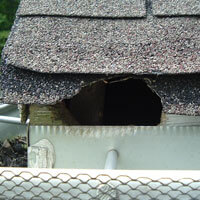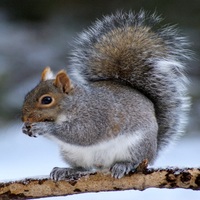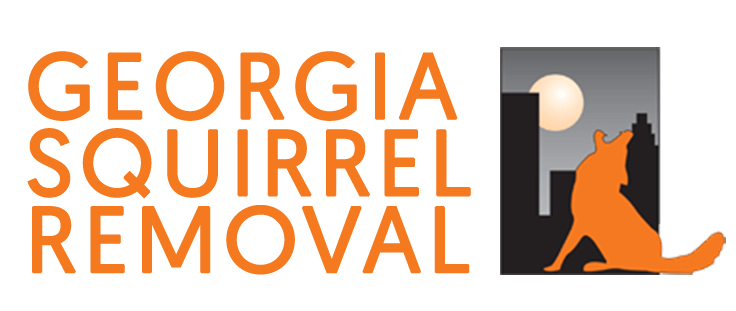Hearing a scratching sound in your attic? This can be an indication that squirrels have intruded in the attic of your house, which can become a big problem if not removed on time. Georgia Squirrel Removal can help you to stop their infestation. Just trapping and removing the squirrels is the first step in the removal of squirrels in the attic. The second step is the squirrel exclusion and third is clean up and attic restoration.
 Ultrasonic devices and chemical repellents are ineffective for eliminating squirrels from an active nesting area in your attic or crawl space. The most effective way to get rid of squirrels from an occupied attic involves following multiple steps to identify and seal active entry and exit points, potential re-entry points and then remove the squirrels with the correct trap and bait. Once these critters are removed what about rodent dropping cleanup?
Ultrasonic devices and chemical repellents are ineffective for eliminating squirrels from an active nesting area in your attic or crawl space. The most effective way to get rid of squirrels from an occupied attic involves following multiple steps to identify and seal active entry and exit points, potential re-entry points and then remove the squirrels with the correct trap and bait. Once these critters are removed what about rodent dropping cleanup?
When animals like bats, grey squirrels, rats or flying squirrels have resided in an attic or crawl space for any length of time, they contaminate the insulation with urine, feces, nests, fleas, bugs and other foreign matter. Unless attic remediation and squirrel dropping cleanup steps are taken, these contaminants will remain in your home’s attic insulation, leaving humans vulnerable to hazards that remain long after the squirrels in attic are removed. This makes rodent dropping cleanup such a valuable investment to greater Atlanta residents.
Rodent Dropping Cleanup
 Visible and accessible areas of the interior and exterior walls, where squirrels in attic were nesting, must be thoroughly cleaned. It is important to get rid of squirrel waste and fecal matter. Rodent dropping cleanup, from structures should be left to experienced professionals familiar with proper removal procedures. This prevents droppings from entering the home proper.
Visible and accessible areas of the interior and exterior walls, where squirrels in attic were nesting, must be thoroughly cleaned. It is important to get rid of squirrel waste and fecal matter. Rodent dropping cleanup, from structures should be left to experienced professionals familiar with proper removal procedures. This prevents droppings from entering the home proper.
Georgia Squirrel Removal uses a large gas powered vacuum cleaner to remove contaminated material. The soiled material goes into a specialized enclosed trailer. Our trailers and vacuum system can handle buildings with large amounts of contaminated insulation. These high-volume systems can remove tons of contaminated material in a short period. Typically, the only part of the system that enters the home is the hose and the worker. A lot of the times, the hose can be brought through a roof or gable vent meaning only the technician will enter the living space for rodent dropping cleanup.
Animal Waste Removal
After all contaminated material has been successfully removed an approved disinfectant will be applied to kill any parasites associated with squirrels in attics. Fleas, lice, mites and bat bugs can infest bats, birds and other animals. Insecticides may be used for these parasites looking for another host. If not treated, they may wander into the living space of human dwellings potentially transmitting diseases to humans. A deodorizer being fogged into the attic to eliminate animal odors will be the final step in the rodent dropping cleanup process.
Attic Insulation Replacement
 After we get rid of squirrels in attic and the squirrel’s entry points are sealed and the rodent dropping cleanup is complete, re-insulating of the attic or walls should be the final step. This will leave the attic clean and appropriately insulated to help control heating and cooling costs. Although the clean up is suggested another popular option is to spot clean the nest sites and the apply additional insulation to the home’s existing insulation to bring a consistency though out the attic.
After we get rid of squirrels in attic and the squirrel’s entry points are sealed and the rodent dropping cleanup is complete, re-insulating of the attic or walls should be the final step. This will leave the attic clean and appropriately insulated to help control heating and cooling costs. Although the clean up is suggested another popular option is to spot clean the nest sites and the apply additional insulation to the home’s existing insulation to bring a consistency though out the attic.
Loose-fill insulation, usually made of fiberglass or cellulose, should be applied to the attic floor by blowing it in with a machine. The blown-in material will blanket the building cavities and attic floors. Loose-fill insulation is well suited for places where it is difficult to install other types of insulation, such as rolled insulation. Many homes in Georgia were poorly insulated since the time of construction. This is an excellent time to correct this costly attic problem.
During the summer, attic temperatures in Atlanta usually exceed outside ambient temperatures. Because of the extreme temperature difference, insulating the floor of the attic is especially important. This keeps heat from entering into the living quarters. According to the U.S. Department of Energy and Georgia building code, the standard Georgia attic should have a minimum of R-30 and a recommended R-49 insulation covering. If your home does not already have R-49 attic insulation, once the removal process is complete Urban Wildlife Control can upgrade your home to R-49 levels. Feel free to call us for more information on cleanup after squirrels in attic.
Attic Insulation Benefits
Energy cost savings- An under-insulated attic can lead to significant home comfort problems and high energy bills. Adding insulation to a poorly insulated home will reduce the home’s energy consumption. Depending on the amount of insulation already in the home, many homeowners will recoup the costs of new insulation through energy savings in as little as a few years.
Reducing wear on heating and A/C equipment- A properly insulated home reduces the amount of time the HVAC equipment runs, this reduces equipment wear, which increases equipment life.
Help protect the environment- The U.S. Department of Energy has stated that heating and cooling homes and offices account for 50-70% of the energy used in the U.S. Adding or replacing poor insulation will reduce the home’s power consumption, which helps reduce greenhouse gasses. Adding or increasing insulation has a positive effect on the environment.
What Is R-value?
R-value is the measurement of thermal resistance (R) to heat flowing, or how well the insulation blanket reduces heat movement. The higher the R-value, the more efficient the barrier. The U.S. Department of Energy recommends attics, in Georgia, have an R-value of R-49.
